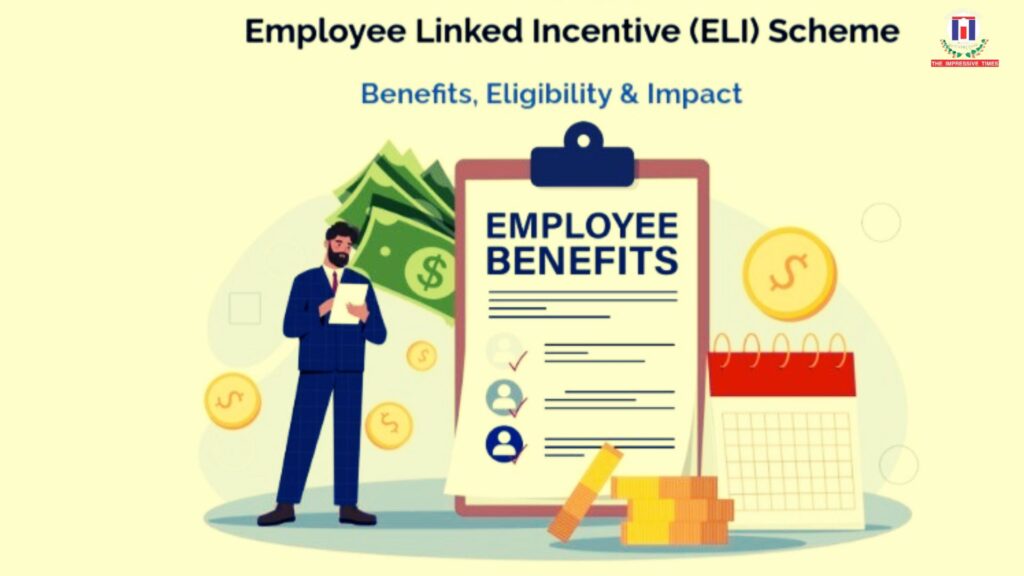By Dr. Gyan Pathak
With the approval of the Union Cabinet chaired by Prime Minister Narendra Modi, though after loss of the entire financial year 2024-25 and three months into the current financial year 2025-26, the Employment Linked Incentive (ELI) Scheme announced in the Union Budget 2024-25 on July 23, 2024, is ultimately set to start from August 1, 2025. It was supposed to be launched on August 1, 2024.
The ELI Scheme was announced as part of PM’s package of five schemes to facilitate employment, skilling and other opportunities for 4.1 crore youth with a total budget of Rs 2 Lakh crore. Union Budget 2024-25 had allocated Rs 10,000 crore for the ELI Scheme for the year 2024-25. Though the scheme was non-starter, until the presentation of the Union Budget 2025-26 on February 1, 2025, Centre had made a provision of Rs 20,000 crore under this scheme for the year 2025-26. Union Minister of Labour and Employment Dr Mansukh Mandaviya had then claimed that the government’s focus was firmly on the newly announced ELI Scheme, which was a lie.
Union Budget 2025-26 showed a likely expenditure of Rs 6799.43 crore in 2024-25 in the revised estimate for the yet to be started ELI Scheme. Nevertheless, the financial year 2024-25 closed on March 31, 2025, without even the schemed getting approval of the Union Cabinet, and no details of the schemes were available.
ELI Scheme is heavily depended on Employment Provident Fund Organisation (EPFO) and the private sector companies. On the one hand EPFO was not ready with its online system, and on the other private companies were hesitant in joining the scheme.
Even by December 2024, Union Ministry of Labour and Employment was not ready with the details of the scheme, though EPFO was being revamped to implement the ELI scheme. The ministry had held about two dozen meetings with EPFO officials and India Inc, since the last week of September 2024.
EPFO was ordered to ensure that employers complete the first stage of the process of Universal Account Number (UAN) activation through Aadhaar-based OTP by November 30, 2024, starting with the latest joinee employees in the current financial year 2024-25.Government had also said that in the second stage of the process, going forward, UAN activation was to be included in the state-of-the-art facility of Biometric authentication, through Face-recognition Technology. After that the employers will be required to complete the process for all employees working with them.
Nevertheless, EPFO and the India Inc just failed to complete the first stage of UAN activation by November 30. EPFO then extended the deadline many times, the last one being June 30, 2025. Many employers have still opted out of the scheme, since details of the schemes were not available to them, and even the scheme was not approved by the government.
Now, when the details of the scheme are available, and the scheme has got the Union Cabinet’s approval, India Inc still seems to be hesitant in joining the scheme on account of its being unattractive for them. Government has thus still a tough task of getting employers on board.
There have been many roadblocks in implementation of the Scheme. The Union Ministry of Labour and Employment had cited eligibility conditions before the department related parliamentary panel as major roadblocks to successful implementation of the scheme in the stipulated time-frame in the financial year 2024-25 ending on March 31, 2025.
The Parliamentary panel was also informed by the ministry that the total budgetary allocation for this scheme in the next six-and-and half years would be Rs1.07 trillion. The ministry had also informed the panel that 93 lakh workers would get benefit from the scheme in 2024-25. However, all the assurances failed.
Union Budget 2024-25 has said that the programme would generate 8 million decent jobs, apart from skilling 10 million youth over the next five years. ELI Scheme has three schemes A, B, and C, under which employers are to be given incentives for hiring of additional workers.
Under the ELI Scheme approved on July 1, 2025, the government has said, “With an outlay of Rs 99,446 Crore, the ELI Scheme aims to incentivize the creation of more than 3.5 Crore jobs in the country, over a period of 2 years. Out of these, 1.92 Crore beneficiaries will be first timers, entering the workforce. The benefits of the Scheme would be applicable to jobs created between 01st August 2025 and 31st July, 2027.”
The 1st instalment under Part A of the scheme will be payable after 6 months of service and the 2nd instalment will be payable after 12 months of service and completion of a financial literacy programme by the employee. To encourage the habit of saving, a portion of the incentive will be kept in a savings instrument of deposit account for a fixed period and can be withdrawn by the employee at a later date. It will benefit around 1.92 crore first time employees, the government has said.
Under Part B of the scheme, the Government will incentivize employers, up to Rs 3000 per month, for two years, for each additional employee with sustained employment for at least six months. For the manufacturing sector, incentives will be extended to the 3rd and 4th years as well.
Establishments, which are registered with EPFO, will be required to hire at least two additional employees (for employers with less than 50 employees) or five additional employees (for employers with 50 or more employees), on a sustained basis for at least six months.
Government has also prepared the incentive structure, which has three EPF Wage Slabs of additional employees. In first wage slab up to Rs 10000 per month salary would get upto Rs 1000 or proportionate basis. The second wage slab is Rs10000 – Rs 20000, for which incentive will be Rs2000. The third wage slab is Rs 20000 – Rs 1 lakh per month, for which incentive will be Rs 3000.
The part B is expected to incentivize employers for the creation of additional employment of nearly 2.60 crore persons, the government said.
All payments to the First Time Employees under Part A of the Scheme will be made through DBT (Direct Benefit Transfer) mode using Aadhaar Bridge Payment System (ABPS). Payments to the Employers under Part B will be made directly into their PAN-linked Accounts. (IPA Service)


 Special Intensive Revision Is Turning Out To Be A Vote Bandi For Muslims And Dalits
Special Intensive Revision Is Turning Out To Be A Vote Bandi For Muslims And Dalits 